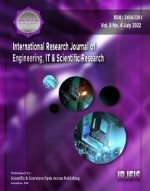Analysis of labor productivity level and time performance satisfaction in the SMAN 10 Denpasar development project
Keywords:
BCWP, BCWS, performance satisfaction, productivity, timeAbstract
The project is a series of work that aims to achieve project objectives according to the requirements that have been set at the beginning of the project such as quality, time and cost requirements. In the current era of globalization, every worker in all sectors including the construction sector is required to have high work productivity. Productivity is very important for every worker in completing a job, the lack of awareness of the workforce on the importance of productivity is one of the causes of the low work produced. This study aims to determine the level of productivity and satisfaction with time performance. The data used in this study were analyzed by measuring productivity and satisfaction of watuk performance measured by the SPI value.
Downloads
References
Abma, V. (2016). Pengendalian Waktu Dengan Metode Earned Value Pada Proyek Pembangunan Hotel Fave Kotabaru Yogyakarta. Teknisia, 218-228.
Atmaja, J., Suhelmidawati, E., Alexander, H., Natalia, M., Misriani, M., & Nola, R. (2020). Analisa Kinerja Proyek Menggunakan Metoda Earned Value Management dan Pengendalian dengan Metoda Time Cost Trade Off (Studi Kasus Proyek Pembangunan Jembatan Silaosinan Kabupaten Mentawai). Jurnal Teknik Sipil ITP, 7(2), 6-6.
Dipohusodo, I. (1996). Manajemen Proyek & Konstruksi Jilid 2.
Espinosa-Garza, G., Loera-Hernández, I., & Antonyan, N. (2017). Increase of productivity through the study of work activities in the construction sector. Procedia Manufacturing, 13, 1003-1010. https://doi.org/10.1016/j.promfg.2017.09.100
Farr, J. L. (1976). Incentive schedules, productivity, and satisfaction in work groups: A laboratory study. Organizational Behavior and Human Performance, 17(1), 159-170. https://doi.org/10.1016/0030-5073(76)90059-3
Graen, G., Novak, M. A., & Sommerkamp, P. (1982). The effects of leader—member exchange and job design on productivity and satisfaction: Testing a dual attachment model. Organizational behavior and human performance, 30(1), 109-131. https://doi.org/10.1016/0030-5073(82)90236-7
Kim, M., Do Kim, Y., & Lee, H. W. (2020). It is time to consider athletes’ well-being and performance satisfaction: The roles of authentic leadership and psychological capital. Sport Management Review, 23(5), 964-977. https://doi.org/10.1016/j.smr.2019.12.008
Laksono, T. D. (2007). Produktivitas pada proyek konstruksi. Teodolita (Media Komunikasi Ilmiah di Bidang Teknik), 8(2).
Lim, E. C., & Alum, J. (1995). Construction productivity: issues encountered by contractors in Singapore. International journal of project management, 13(1), 51-58. https://doi.org/10.1016/0263-7863(95)95704-H
Meliasari, I., & Indrayadi, M. (2011). Earned Value Analysis terhadap biaya dan waktu pada proyek konstruksi. JeLAST: Jurnal PWK, Laut, Sipil, Tambang, 2(2).
Muchdarsyah, S. (2003). Produktivitas apa dan Bagaimana. Bumi Aksara, Jakarta.
Mulawarman, A. A. N. B. (2022). Design of prada paint dulang craft drying machine to improve product quality and work productivity of dulang fiber crafters in Bangli regency. International Research Journal of Engineering, IT & Scientific Research, 8(1), 27-35. https://doi.org/10.21744/irjeis.v8n1.2046
Panach, J. I., España, S., Dieste, O., Pastor, O., & Juristo, N. (2015). In search of evidence for model-driven development claims: An experiment on quality, effort, productivity and satisfaction. Information and software technology, 62, 164-186. https://doi.org/10.1016/j.infsof.2015.02.012
Pemayun, C. I. B., & Martini, I. A. O. (2021). Implementation motivation, work discipline in work productivity of employees in the hospital. International Research Journal of Management, IT and Social Sciences, 8(6), 630-638. https://doi.org/10.21744/irjmis.v8n6.1961
Purnomo, S. (1999). Pengantar Manajemen Proyek, Diktat Kuliah Magister Teknik Sipil UII.
Shehata, M. E., & El-Gohary, K. M. (2011). Towards improving construction labor productivity and projects’ performance. Alexandria Engineering Journal, 50(4), 321-330. https://doi.org/10.1016/j.aej.2012.02.001
Shikdar, A. A., & Das, B. (2003). The relationship between worker satisfaction and productivity in a repetitive industrial task. Applied ergonomics, 34(6), 603-610. https://doi.org/10.1016/S0003-6870(03)00057-7
Soemardi, B. W., Wirahadikusumah, R. D., Abduh, M., & Pujoartanto, N. (2006). Konsep Earned Value untuk Pengelolaan Proyek Konstruksi. Institut Teknologi Bandung.
Syahroni, M. (2019). Analisis kepuasan owner terhadap kinerja kontraktor di Dinas Pekerjaan Umum dan Penataan Ruang Kabupaten Lumajang. axial: jurnal rekayasa dan manajemen konstruksi, 6(3), 165-170.
Van Birgelen, M., De Jong, A., & De Ruyter, K. (2006). Multi-channel service retailing: The effects of channel performance satisfaction on behavioral intentions. Journal of Retailing, 82(4), 367-377. https://doi.org/10.1016/j.jretai.2006.08.010
Yi, Y., Nataraajan, R., & Gong, T. (2011). Customer participation and citizenship behavioral influences on employee performance, satisfaction, commitment, and turnover intention. Journal of Business Research, 64(1), 87-95. https://doi.org/10.1016/j.jbusres.2009.12.007
Published
How to Cite
Issue
Section
Copyright (c) 2022 International research journal of engineering, IT & scientific research

This work is licensed under a Creative Commons Attribution-NonCommercial-NoDerivatives 4.0 International License.
Articles published in the International Research Journal of Engineering, IT & Scientific research (IRJEIS) are available under Creative Commons Attribution Non-Commercial No Derivatives Licence (CC BY-NC-ND 4.0). Authors retain copyright in their work and grant IRJEIS right of first publication under CC BY-NC-ND 4.0. Users have the right to read, download, copy, distribute, print, search, or link to the full texts of articles in this journal, and to use them for any other lawful purpose.
Articles published in IRJEIS can be copied, communicated and shared in their published form for non-commercial purposes provided full attribution is given to the author and the journal. Authors are able to enter into separate, additional contractual arrangements for the non-exclusive distribution of the journal's published version of the work (e.g., post it to an institutional repository or publish it in a book), with an acknowledgment of its initial publication in this journal.
This copyright notice applies to articles published in IRJEIS volumes 6 onwards. Please read about the copyright notices for previous volumes under Journal History.















